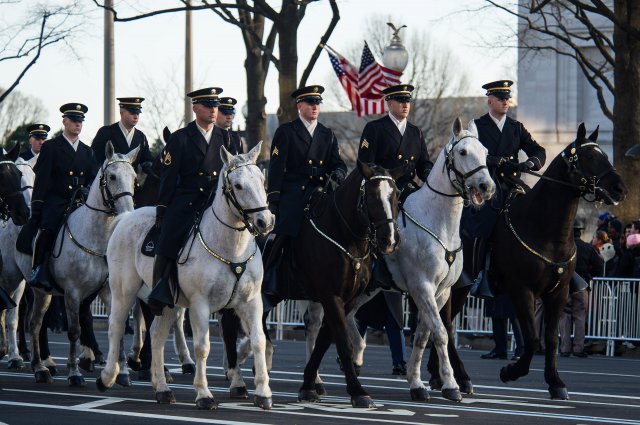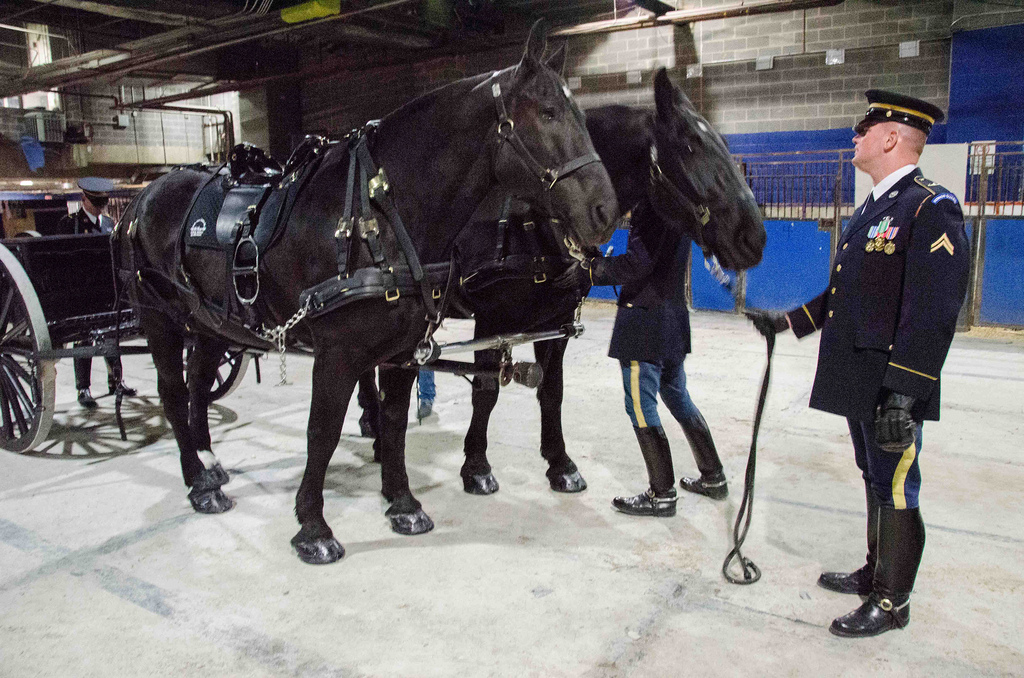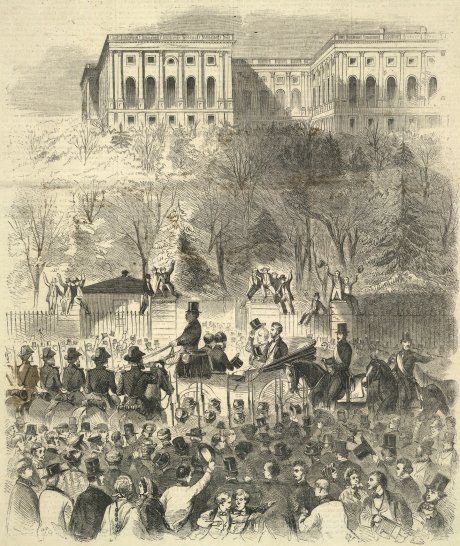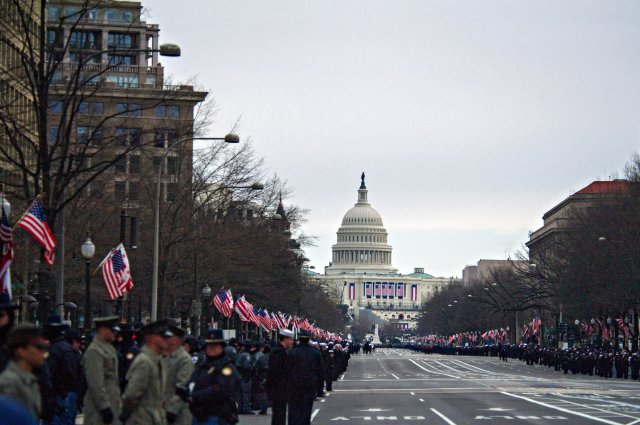
Equestrian Organizations in the 2017 Presidential Inauguration Parade
On January 20th, the transfer of power in Washington, DC officially begins with the traditional Inaugural Parade. Over 3,000 organizations applied to march in the parade, with only 40 being selected. Of those 40, nine of them are equine organizations.
“We are pleased to see the equine community being well represented during the Inaugural Parade,” said American Horse Council President Julie Broadway. “Equines were an integral part of the foundation of the United States, and Presidents throughout history have appreciated and admired the grandeur of the horse.”

The most recognized equines in the parade will be the Caisson Platoon from Fort Myer, VA. In addition to their well-known, solemn duty of military funerals, the Caisson Platoon also participates in numerous historic processions performed by the Old Guard, as well as the notable honor of being included in Presidential Inaugural Parades.
The Michigan Multi-Jurisdiction Mounted Police Drill Team & Color Guard, from Ann Arbor, MI, will be participating in the Inaugural Parade for the third time. The Michigan Horse Council (MHC) will also be well represented, as MHC President Col. Don Packard, US Army Retired, will carry the MHC flag in the parade. This is also the first time a person not a member of mounted law enforcement has ridden with the group. “We are excited to be coming to Washington, DC,” said Col. Packard. “There are 23 riders in this group, and they are bringing along a support staff of another 20 people who are also honored to be a part of such a historic event.”
The 1st Infantry Commanding General’s Mounted Color Guard of Ft. Riley, KS will also be participating in this year’s Inaugural Parade. Established in 1992, the Commanding General's Mounted Color Guard (CMCG) provides a link to Fort Riley's historic past. Troopers and horses of this unit are outfitted in the uniforms, accessories and equipment of the Civil War period. From privates to officers, these men and women recreate American Horse Soldier at community events, parades, and official ceremonies. At the AHC’s recent Coalition of State Horse Council’s Fall meeting in October, the CMCG did a demonstration for meeting attendees at Kansas State University and then a short meet/greet with Q&A about their program.
History of the Presidential Inauguration Parade
After the conclusion of the Inaugural Ceremonies and the luncheon, the President and Vice President will make their way down Pennsylvania Avenue to the White House, leading a procession of ceremonial military regiments, citizens' groups, marching bands and floats. The President, Vice President, their spouses and special guests will then review the parade as it passes in front of the Presidential Reviewing Stand. The Inaugural parade is a celebrated and much anticipated event for millions of Americans across the country.

The tradition of an Inaugural parade dates back to the very first Inauguration, when George Washington took the oath of office on April 30, 1789, in New York City. As he began his journey from Mount Vernon to New York City, local militias joined his procession as it passed through towns along the way. Once he arrived in New York City, members of the Continental Army, government officials, members of Congress and prominent citizens escorted Washington to Federal Hall for his swearing-in ceremony.
The only parade known to have been canceled owing to bad weather was Ronald Regan's second in 1985, when frigid temperatures made the situation dangerous. The largest parade, with 73 bands, 59 floats, horses, elephants, and civilian and military vehicles, and lasting 4 hours and 32 minutes, occurred in 1953 at Dwight D. Eisenhower's first Inauguration. Today, the limit is set at 15,000 participants.
Today, the parade is organized by the Joint Task Force-National Capital Region, and participants are selected by the Presidential Inaugural Committee. Requests to participate in Inauguration Day events for marching bands, marching units, mounted units, and other performers are collected by the Joint Task Force-National Capital Region.

Article courtesy of the American Horse Council
As the national association representing all segments of the horse industry in Washington, D.C., the American Horse Council works daily to represent equine interests and opportunities. Organized in 1969, the AHC promotes and protects the industry by communicating with Congress, federal agencies, the media and the industry on behalf of all horse related interests each and every day.
The AHC is member supported by individuals and organizations representing virtually every facet of the horse world from owners, breeders, veterinarians, farriers, breed registries and horsemen's associations to horse shows, race tracks, rodeos, commercial suppliers and state horse councils.








